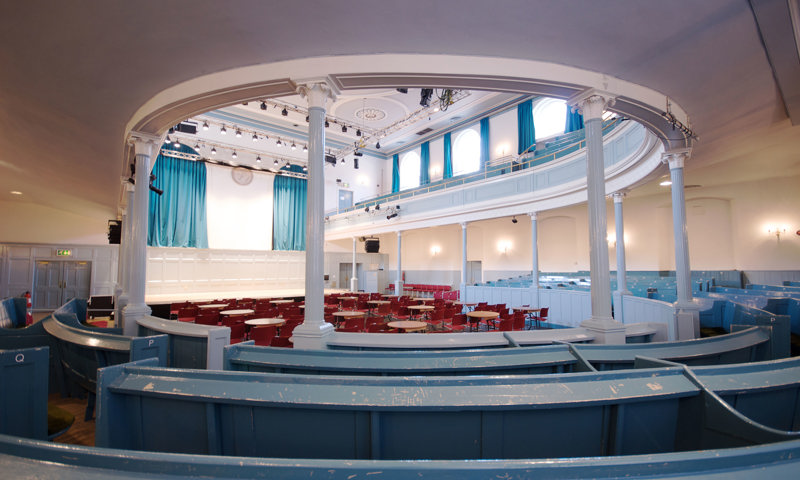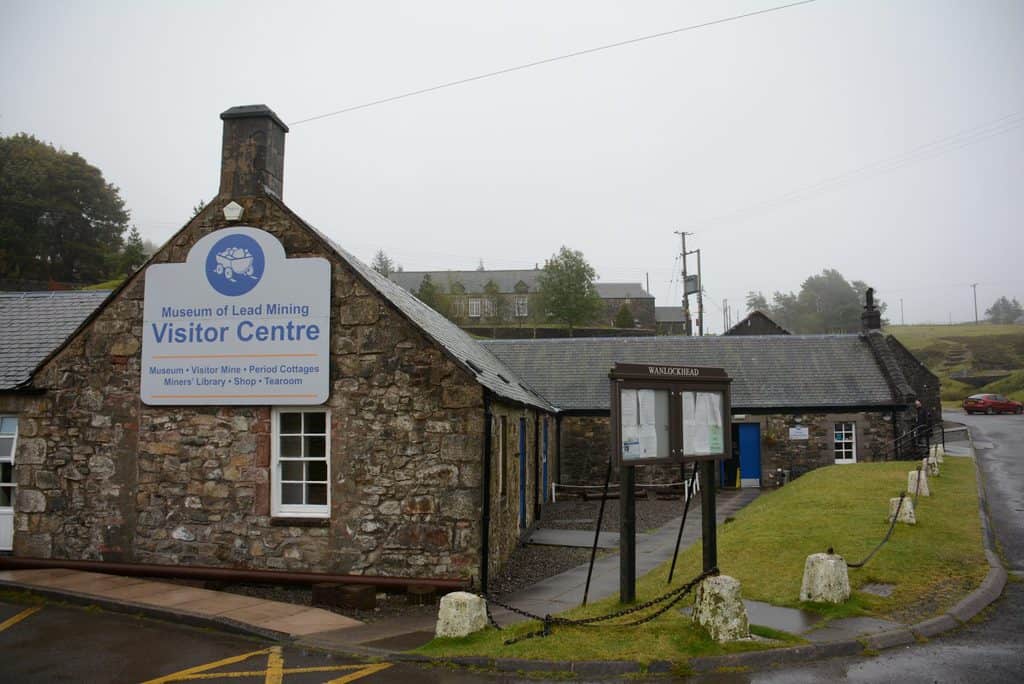Historic Environment Recovery Funding will support organisations and help to support the recovery of Scotland’s historic environment sector from the impacts of COVID-19
Wanlockhead Museum Trust, A working steam railway museum in Spey Valley, a historic castle on the Isle of Mull and an A-listed lighthouse on Shetland are among those set to benefit from funding as part of the Historic Environment Recovery Fund.
Historic Environment Scotland (HES) has announced funding of £1,916,238 to over 40 organisations across the country to help support the recovery of Scotland’s historic environment sector from the impacts of COVID-19.
The Historic Environment Recovery Fund was launched in October with two funding streams available.
The first stream – the Reopening Historic Buildings and Sites stream – offers support to help sites reopen to the public including repairs and PPE equipment and adaptions to facilitate social distancing. As part of this stream, £240,000 has been awarded to the A-listed Queen’s Hall in Edinburgh to assist with internal adaptions to facilitate social distancing and make the historic theatre safe for visitors when it is able to re-open.
£17,625 has also been awarded to Duart Castle Partnership to assist with works at the 13th century Duart Castle on the Isle of Mull as they start to plan for the next visitor season. As part of the works, a one-way system will be developed so that visitors can explore the castle safely.
Meanwhile, £73,743 has been awarded to Shetland Amenity Trust for works to the A-listed Sumburgh Head Lighthouse on Shetland. The funding will be used to address building maintenance as a result of winter storm damage, install COVID adaptions and develop a new business plan. The Trust will also deliver a community art project and video to promote the site and re-engage with the local community.
The A-listed Cockenzie House and Gardens in East Lothian has also been awarded £12,112 to cover repairs which will ensure continued public access to the building which is a vibrant community hub offering studios for small business and artists and delivers a range of heritage and community projects within the grounds.
The second stream – the Sector Resilience and Recovery stream – will help organisations to protect jobs or skills training posts, as well as assist with activities to help them adapt to the ongoing impacts of COVID-19. Organisations which HES is supporting under this stream include The Scottish Lime Centre, based in Fife. The Scottish Lime Centre is a key provider of advice, training and practical experience for the repair and conservation of Scotland’s traditional and historic buildings and £25,000 has been awarded to upgrade their website, improve their online presence and develop four training videos for traditional building skills, enabling them to continue to deliver valuable online training in a COVID-safe manner.
The Strathspey Railway Company, which runs a working steam railway museum offering passengers a 20-mile journey through Spey Valley in historic rail carriages pulled by historic locomotives, has been awarded £57,700. The funding will safeguard the development of traditional skills including three engineering apprenticeships as well as PPE equipment to allow the museum to safely re-open and allow visitors to enjoy the railway heritage of the Spey Valley once it is safe to do so.
In addition, £39,575 has been awarded to the Friends of Dundonald Castle – a charity that operates the 14th century castle and visitor centre in Ayrshire. The funding will enable the organisation to focus on increasing their resilience while adapting to COVID-19, develop recovery plans, increase their digital presence and produce online learning resources.

The Historic Environment Recovery Fund is administered by HES on behalf of the Scottish Government.
Alex Paterson, Chief Executive at HES, said:
From museums in the Highlands to historic venues and buildings in central Scotland and the Borders, we are pleased to support a diverse range of projects the length and breadth of Scotland as part of the Historic Environment Recovery Fund. By helping to protect jobs, reopen historic sites and maintaining investment in traditional skills training and apprenticeships, we hope to support the wider recovery of the sector and Scotland’s economy.
“While historic sites and visitor attractions have been impacted by the closure of sites throughout the 2020 visitor season and the loss of revenue, other organisations in the sector have also had to adapt the way in which they carry out their work, put crucial traditional skills training and educational activities on hold and look at new ways to generate income, and we hope that this funding will allow the recipients to prepare for the future.
“The historic environment sector provides countless benefits to local communities – including providing jobs and generating tourism spend – and it is vital that we support these organisations and ensure their important work can continue as we face the challenges of the COVID-19 pandemic and seek to harness opportunities ahead.”
Culture Secretary Fiona Hyslop said:
“Scotland is internationally renowned for the quality and diversity of its historic environment. Our historic environment plays a crucial role in defining who we are as a nation, supporting wellbeing and sustainability within communities and promoting a positive image of Scotland across the world.
I am pleased that a wide range of projects will benefit from Scottish Government funding as part of the Historic Environment Recovery Fund. The support delivered through this fund will safeguard our shared heritage for future generations, protect jobs and help to strengthen Scotland’s wider economic recovery.”
The projects which have been awarded funding are:
- Archaeology Scotland – £72,000
- Ardnamurchan Lighthouse Trust Ltd – £27,171
- Bannockburn House Trust – £27,282
- Braemar Community Limited – £30,620
- Castle Roy Trust SCIO – £11,248
- Cawdor Castle Ltd – £100,528
- Clan Mackenzie Charitable Trust – £24,400
- Cockenzie House and Gardens – £12,112
- Collective – £47,988
- Dr Coralie Mills, Dendrochronicle – £14,998
- Duart Castle Partnership – £17,625
- Eden Court Highlands – £59,364
- Ferryhill Railway Heritage Trust – £19,815
- Fife Historic Buildings Trust – £83,914
- Finlaggan Trust – £8,347
- Friends of Dundonald Castle SCIO – £39,575
- Friends of Kilbride – £68,509
- Glasgow Women’s Library – £30,000
- Govan Heritage Trust SCIO – £39,905
- Hopetoun House Preservation Trust – £71,355
- King’s Theatre Kirkcaldy Limited – £87,000
- Maryhill Burgh Halls Trust – £18,985
- Northlight Heritage – £14,916
- Open Past – £12,575
- Out of the Blue Arts and Education Trust – £53,351
- Raasay House Community Company – £15,782
- Scottish Lime Centre Trust – £25,000
- Scottish Railway Preservation Society – £158,654
- Shetland Amenity Trust – £73,743
- Skaill House – £30,000
- Smart History – £12,500
- Stonehaven Recreation Grounds – £92,069
- The Abbotsford Trust – £48,730
- The John Rae Society – £17,107
- The Moray Society/Elgin Museum – £8,720
- The Queen’s Hall (Edinburgh) Ltd – £240,000
- The Ridge SCIO – £24,418
- The Strathspey Railway Company – £57,700
- The Swan Trust – £17,800
- Traquair House Charitable Trust – £30,104
- Wanlockhead Museum Trust – £70,328
For further information, visit: www.historicenvironment.scot/grants-and-funding/our-grants/historic-environment-recovery-fund-grants-awarded
About Year of Coasts and Waters 2021
The Year of Coasts and Waters (#YCW2021), led by VisitScotland, will be showcased throughout 2021. Activities and ideas will shine a spotlight on the impact our waters have had on Scotland, from the formation of beautiful natural features to the creation of our national drink – whisky.






